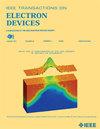A Comparative Analysis of Statistical Modeling and Machine Learning Techniques for Predicting the Lifetime of Light Emitting Diodes From Accelerated Life Testing
IF 2.9
2区 工程技术
Q2 ENGINEERING, ELECTRICAL & ELECTRONIC
引用次数: 0
Abstract
This work uses multivariable life stress models to revisit the catastrophic failure of high-brightness blue light emitting diodes (LEDs) under accelerated life testing (ALT). The stress factors, current, temperature, relative humidity (RH), and their interactions are considered in lifetime studies. First, we show that the lognormal distribution fits the experimental data much better than the Weibull distribution using the standard Kolmogorov-Smirnov test. Furthermore, the best life-stress relationship is the Intel model rather than the peck model used by Nogueira et al. (2016). Additionally, based on the accelerated data, machine learning (ML) techniques are employed to predict the lifetime of LEDs under normal operating conditions. However, the study highlights the limitations of ML in accurately predicting lifetime.加速寿命试验中预测发光二极管寿命的统计建模和机器学习技术的比较分析
本研究使用多变量寿命应力模型来重新审视高亮度蓝光二极管(led)在加速寿命测试(ALT)下的灾难性失效。应力因素、电流、温度、相对湿度(RH)及其相互作用在寿命研究中被考虑。首先,我们使用标准Kolmogorov-Smirnov检验证明对数正态分布比威布尔分布更适合实验数据。此外,最好的生活压力关系是Intel模型,而不是Nogueira等人(2016)使用的peck模型。此外,基于加速数据,采用机器学习(ML)技术来预测led在正常工作条件下的寿命。然而,该研究强调了机器学习在准确预测寿命方面的局限性。
本文章由计算机程序翻译,如有差异,请以英文原文为准。
求助全文
约1分钟内获得全文
求助全文
来源期刊

IEEE Transactions on Electron Devices
工程技术-工程:电子与电气
CiteScore
5.80
自引率
16.10%
发文量
937
审稿时长
3.8 months
期刊介绍:
IEEE Transactions on Electron Devices publishes original and significant contributions relating to the theory, modeling, design, performance and reliability of electron and ion integrated circuit devices and interconnects, involving insulators, metals, organic materials, micro-plasmas, semiconductors, quantum-effect structures, vacuum devices, and emerging materials with applications in bioelectronics, biomedical electronics, computation, communications, displays, microelectromechanics, imaging, micro-actuators, nanoelectronics, optoelectronics, photovoltaics, power ICs and micro-sensors. Tutorial and review papers on these subjects are also published and occasional special issues appear to present a collection of papers which treat particular areas in more depth and breadth.
 求助内容:
求助内容: 应助结果提醒方式:
应助结果提醒方式:


